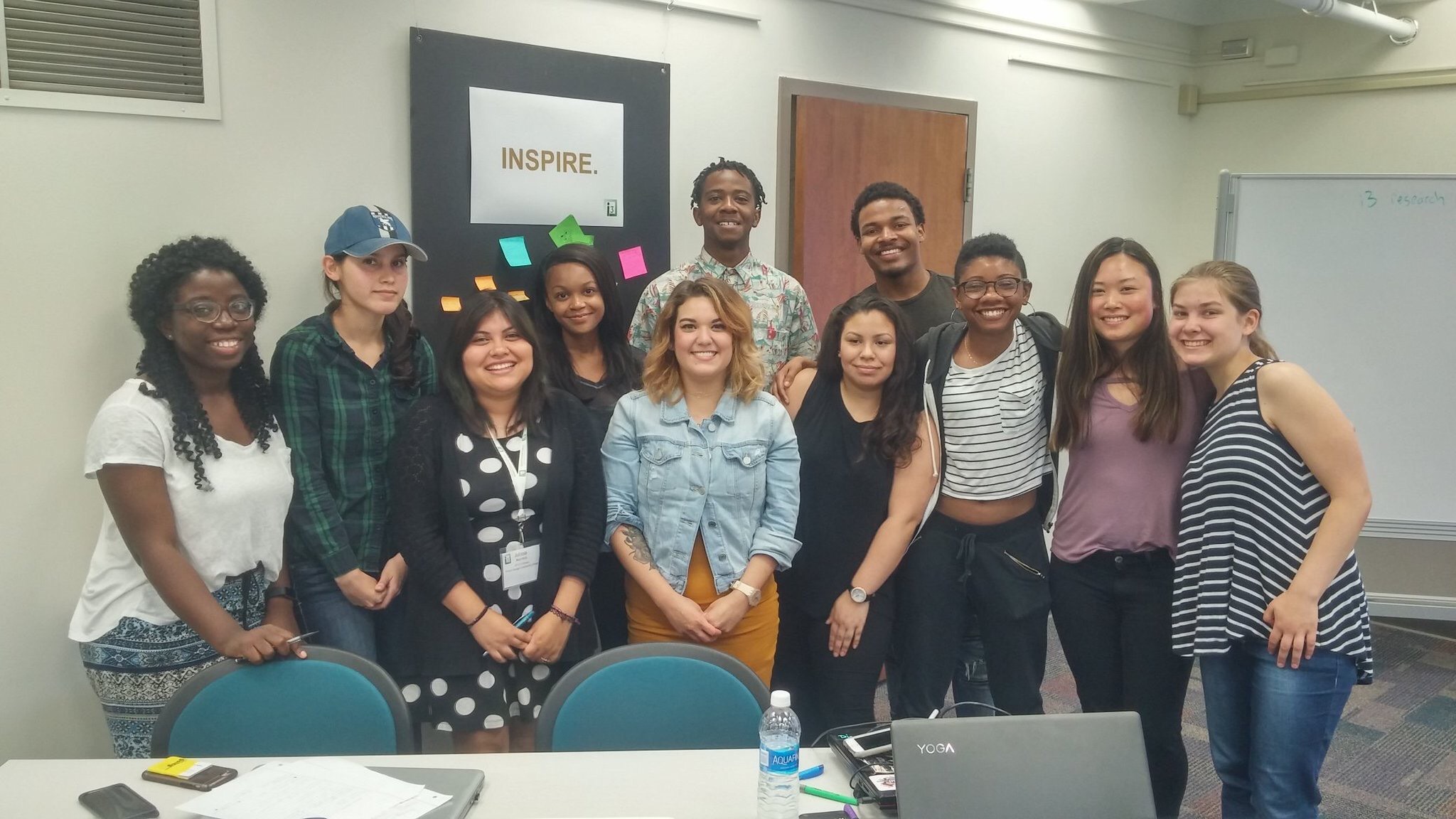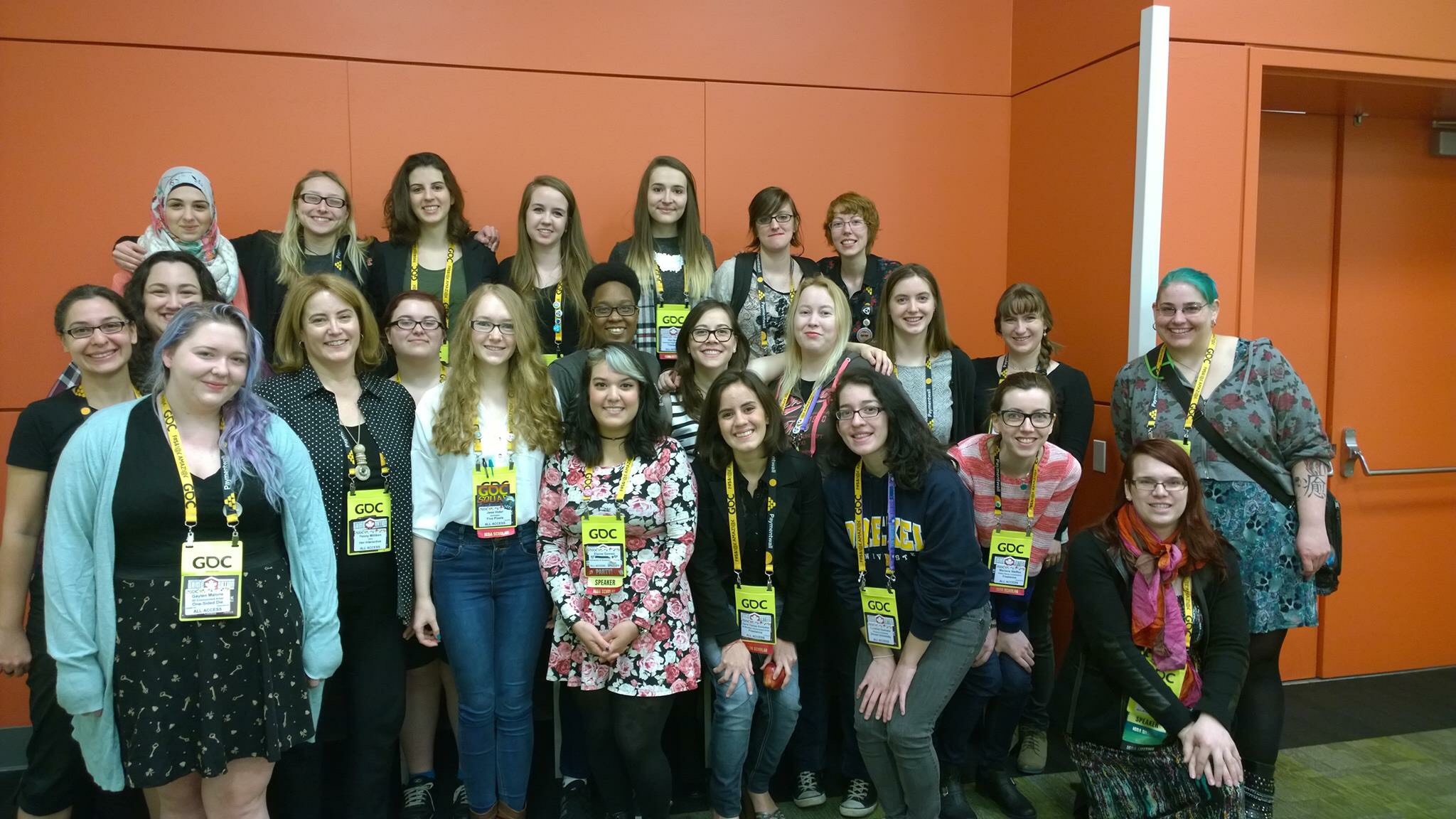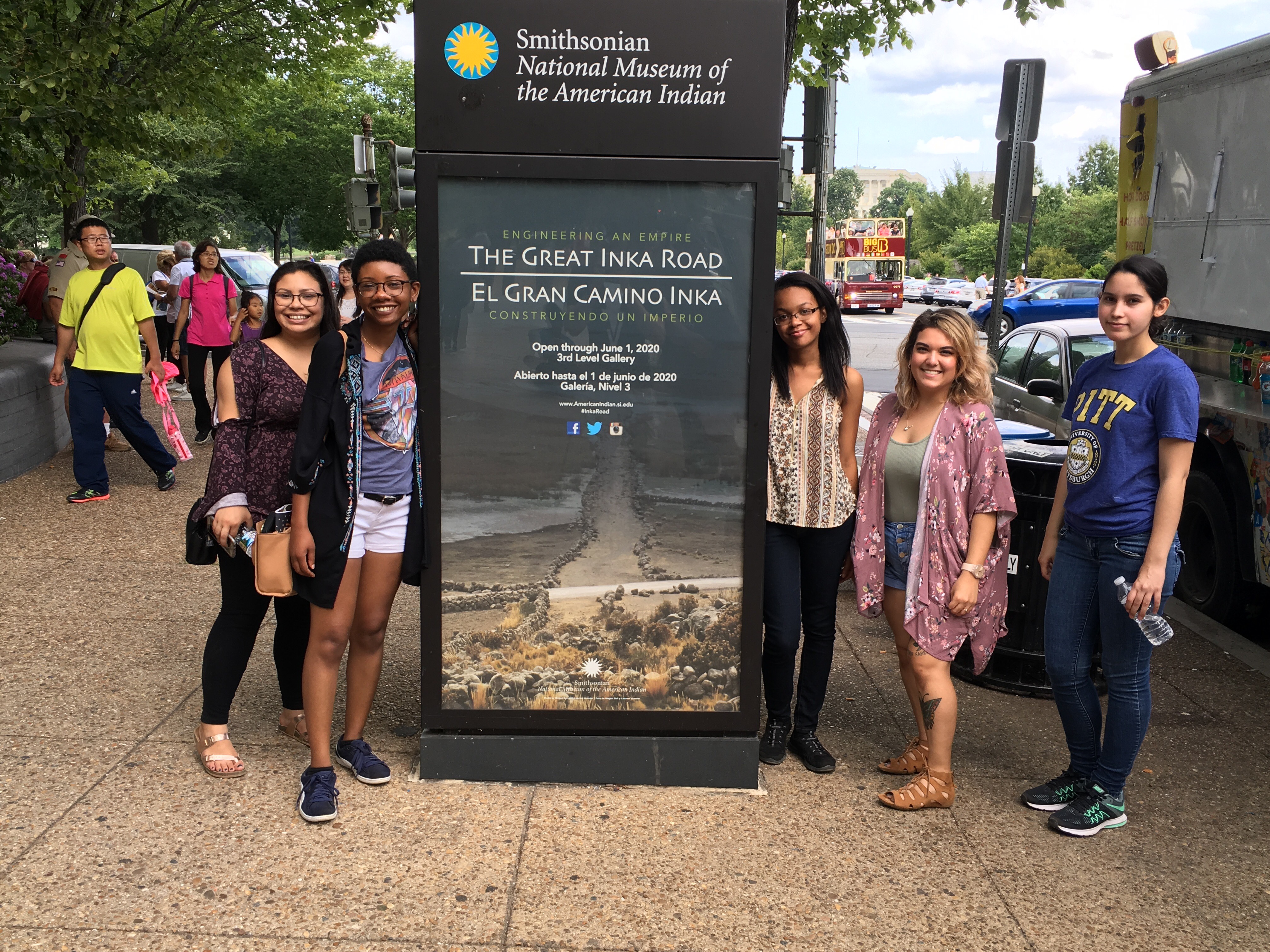9/21/17
Breaking into the Gaming Industry: Interactive Media, Museums, & Mentorship
Elaine Gomez, 2012 i3 Alumnus
 For many i3 Scholars, their summer in Pittsburgh marks their first exposure to the field of information science and information technology. For others, like 2012 alum Elaine Gomez, they grew up around it. “My dad had a computer repair business and worked as an IT consultant for pharmaceutical companies, and my mom worked for Pfizer (now Johnson & Johnson) doing QA for global systems. So IT was always around me, and my parents were telling me that it was being outsourced,” she reminisced.
For many i3 Scholars, their summer in Pittsburgh marks their first exposure to the field of information science and information technology. For others, like 2012 alum Elaine Gomez, they grew up around it. “My dad had a computer repair business and worked as an IT consultant for pharmaceutical companies, and my mom worked for Pfizer (now Johnson & Johnson) doing QA for global systems. So IT was always around me, and my parents were telling me that it was being outsourced,” she reminisced.
With this impression of IT in mind, Elaine declared a major in biomedical engineering at Rutgers University in order to become a doctor. After a rocky first semester, however, she realized that something needed to change. “So I took IT 101, and I fell in love with it. Joe Sanchez was my TA, and he was super alternative. I remember thinking, ‘If this dude can be in this career, then I can too! We were both Latino, we had similar music interests, we had a similar sense of style, and we got along well.”
It was Joe Sanchez who recommended that Elaine join i3, and the rest is history. Elaine completed a research project focused on games (at the encouragement of Joe, she notes). Her project investigated gender roles and representation in games across cultures, connecting this to Gamergate, which was just happening at the time on social media. “People are making these games, so their values and point of view are going into them and some people don't understand that”, she explained. “It’s the same as a film.”
The research project was particularly important to Elaine’s future. “I really needed to figure out what I was going to do, and i3 opened a lot of doors for me and exposed me to a lot of knowledge”, she admitted. While Joe had recommended that she focus on the topic of games, “I hadn’t thought that it was a viable career…I was thinking that, maybe after 10 years of doing IT, I might be able to get into games. But my i3 project showed me that it could be a viable option.”

[Elaine Gomez with members of the 2017 cohort after her research presentation]
After graduating from Rutgers, Elaine applied to the University of Southern California’s Interactive Media and Games program, the number one school for games at the time. Her choice to ultimately pursue her master’s there wasn’t just about the ranking, though. “The chair of the program was what convinced me. Of all of these programs, she was the only woman in a leading position. She really thinks out of the box, and really sold the program,” Elaine noted, adding that, “She talked about storytelling - and the games department is under the cinematic arts department.”
Graduate school brought some soaring highs, but also some difficult lows for Elaine. “I started the program with the goal of being really good at developing games. I wanted to do educational games, not just fantasy.” Quickly, she identified a mentor - one of the Lead Designers of the Uncharted Series - and started to experiment with games, interactive experiences, and generally trying to make something that nobody’s ever seen before. “We make stories,” she reminded, “the only difference between [game designers] and filmmakers is that we make interactive experiences instead of passive stories.”
Yet, the pressure of grad school started catching up to Elaine. “I ended up getting sick. My heart just…the circuitry was overloaded. I wasn’t sleeping well, I wasn’t eating well, and I was so stressed out that I essentially had a heart attack in the middle of grad school.” Doctors had to install a Pacemaker in her heart, and, as one can imagine, it affected her. “Going through all of that change and thinking creatively was…hard. I ended up making really dark games.”

[Elaine Gomez at the Game Developers Conference]
This darkness carried through her thesis work, a game called The Sound of Separation. She ended up building the majority of the game from scratch, and through a lot of turmoil. In true i3 fashion, she wasn’t just dealing with graduate school and her health problems - she was also involved in Girls Make Games and other urban tech spaces to help teach kids game design, and she worked as a TA for one of the game design classes at USC.
She wasn’t able to find a games job in LA before graduation, so Elaine ended up moving back to New Jersey. She took over Joe Sanchez’s games course at Rutgers, which ended up earning her three more courses the following semester. Bloomfield College heard about her through social media, and reached out to ask her to teach an additional course at their school. Through it all, she was also networking. This process was frustrating at times. “I got plenty of interviews, and I would get to the final round,” she said. “And then I wouldn’t get the call back. But now I realize, those jobs were not for me.”
Fortunately, it’s all worked out. Elaine just landed a job as a content developer with E-Line Media - and, she is mentoring an i3 research group! “This job was the one for me. It’s what I want to do,” she said, talking about some of the work that the studio has done. In this, she talked about opportunities available to i3ers who don’t want to do game design. “Any branch of study applies to the game industry, but it is dependent on the game company. Companies like Blizzard or Riot have huge systems that need to be analyzed all the time. Game studios need lawyers to draft contracts, and they’re going to be an even bigger deal as discs and cartridges become obsolete so you think about rights and distribution,” she predicted, adding, “I don’t see games getting put in cartridges and discs. It’s just not financially viable to put that money into production when you could be hiring engineers or buying hardware to make the games better.”
Elaine noted that many people ask her about how to break into the games industry, and her main advice is, “Game design doesn’t start with programming. It starts with pen and paper. Check out Rules of Play by Eric Zimmerman. Learn the principles of game design, and then when it comes to programming, you can make better judgment calls about what it is you need to learn to achieve your goal later.” She also mentions the importance of practice, noting, “You need a portfolio - you need to have made stuff. It’s a process, not an overnight success - and playing games isn’t enough. It doesn’t mean you know how to make a game.”

[Elaine Gomez with
her 2017 i3 Research Team at the Smithsonian National Museum of the American Indian in Washington, D.C.]
Looking to her own future, Elaine aims to lead her own game design studio, and to keep teaching. In particular, she’s interested in collaborating with museums to create games and interactive experiences that people will remember. “Depending on the museum, it can be kind of boring,” she admitted, “We can use games and interactivity to create an experience people will remember. Not everybody just reads things from the little placards - it’s totally different to actually experience the exhibit.” She also noted that museums can be hard to work with, at times; many museums are legacy organizations that are struggling to stay relevant in cultural imagination. Nonetheless, Elaine thinks there are great opportunities to innovate and make an impact on how museums work. As she said, “I don’t know if I want to make games like Assassin’s Creed anymore. I see another future - another way to assert myself as a designer and a person in this community.”